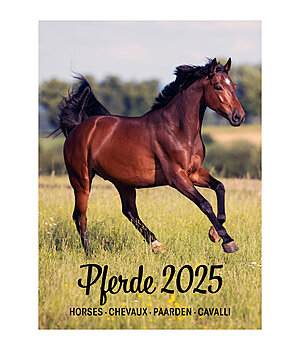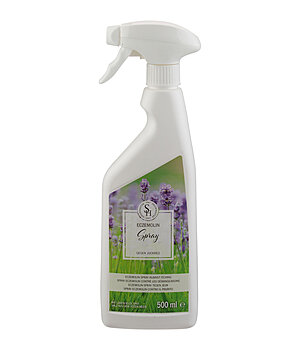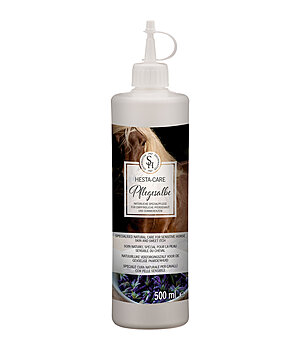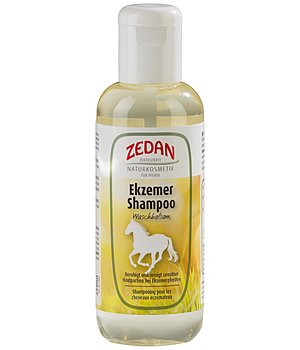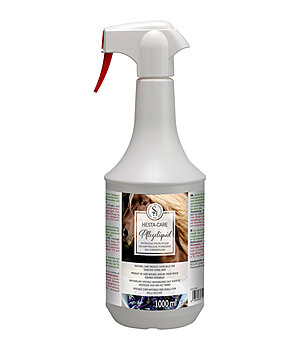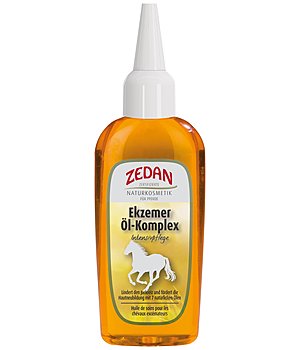The right sweet itch rug for Icelandic horses
It is well known among Icelandic horse lovers that imported Icelandic horses suffer from the dreaded sweet itch. Many Icelandic horses suffer from sweet itch within the first year after their importation. We answer the question what is sweet itch in detail in our sweet itch guide. In the following, we answer the question why Icelandic horses in particular suffer from sweet itch, while other horse breeds are less frequently affected.

Why are Icelandic horses more affected by sweet itch than other horse breeds?
Many horses imported from Iceland develop the itchy skin disease within their first year after importation. Although it is still not clear exactly why Icelandic horses develop sweet itch, it is thought to be a combination of the proteins in the lush green fodder in our latitudes, the insect bites of the gnat and the metabolism of the horses themselves.
In Iceland, the horses live on sparse pastures and are therefore very frugal. In our latitudes, however, Icelandic horses live on lush meadows that contain far more nutrients and especially proteins than the grass on the Nordic island. The Icelandic horse’s metabolism is not adapted to the over-supply of nutrients and therefore overreacts.
In addition, Icelandic horses are exposed to new insects and their bites in their new country of export, which they did not have in their country of origin, Iceland. Especially the bite of the Culicoides mosquito (gnat) causes an allergic reaction in the horse, which leads to itching. The more bites the individual horse gets, the more histamine the horse’s body produces as a defence reaction. The histamine makes the puncture site swell and causes itching. If the histamine is not broken down sufficiently, the itching becomes chronic, whereupon the horse starts scratching and rubbing – the Icelandic horse has sweet itch.
If the Icelandic horse is not given help, it will rub its stitches open, the skin will be damaged and weeping sores will develop. Bacteria penetrating there lead to inflammatory wounds, secondary infections and pain. So the main goal is to minimise contact with insects.
What is the Culicoides mosquito?
The Culicoides mosquito, also known as the gnat, is one of the main reasons why Icelandic horses experience an allergic reaction and are prone to sweet itch. Every second horse, i.e. up to 50% of horses living in areas with a high occurrence of gnats, develop sweet itch. Such areas are swamp and wooded wetlands, but also regions with high livestock numbers.

The Culicoides gnat is not choosy in its choice of hosts, but bites mammals as well as birds and humans. In order to be able to bite, gnats prefer hairless or sparsely hairy parts of the body, which is why hair whorls, ears, abdominal seam and the genital or udder area are particularly affected in horses. However, the dock and crest of neck can also be attacked. Therefore, these areas should be especially well covered with sweet itch rugs and sweet itch masks.
Gnats fly from March to October in UK and are especially active at dusk and dawn. Special precautions are needed during these times.
How can I protect my Icelandic horse from sweet itch?
In the meantime, vaccinations have been developed as a preventive measure, which are administered to Icelandic horses before they are exported. Whether these have an effect will only become clear in the coming years (as of 2021), as research on this has not yet been completed. Since a large number of allergens are found in the saliva of the gnats, it is difficult to produce an effective vaccine. Owners of Icelandic horses therefore cannot do without fly protection, sweet itch rugs and fly masks. Basically, the mosquitoes should be given as little surface to bite on as possible. You can find out which sweet itch rug is best for an Icelandic horse in the next section.
Other preventive measures to protect the Icelandic horse from sweet itch are:
- Turnout: avoid fields near standing/flowing water, marshes and wind-sheltered wetlands – prefer wide open countryside.
- Shelter: Provide shelters with fly traps
- Turnout management: Adjust turnout time to avoid main flight phase of mosquitoes (turnout from mid-morning to mid-afternoon), no turnout in hot and humid weather (summer rain or thunderstorms).
- Avoid over-supply of protein: shorten grazing time to a maximum of 4 hours.
- Pasture and stable hygiene to avoid attracting insects unnecessarily: Collect horse droppings, avoid wet spots (wet hay), remove/regularly empty waste bins, empty unused water buckets, remove uneaten feed remains, regularly clean drinkers and troughs.
- Feeding: feed low in grains, low in protein and high in roughage. Feeding hay alone and grazing by the hour (max. 4 hours) is sufficient.
- Supplementation: sweet itch horses often lack zinc, which is responsible for maintaining the skin and an intact immune system. A supplementary feed rich in zinc, manganese and biotin should be fed.
- Repellents, fly repellents: spray the horse with fly repellent sprays.
- Sweet itch rugs: Cover the Icelandic horse at an early stage. Already in the first warm days of spring there is an explosion of insects that are responsible for sweet itch.
SELECTED CARE PRODUCTS FOR SWEET ITCH
What makes a good sweet itch rug for Icelandic horses?
An Icelandic horse usually needs a sweet itch rug in the summer season. Sometimes the horse even has to wear the rug around the clock to avoid being exposed to insect bites without protection. Therefore, it is important that the rug fits properly without compromise, otherwise it will cause pressure and chafing. Although there is a wide range of sweet itch rugs on the market, again the particular build of an Icelandic horse must be taken into account. So what is important when it comes to the accuracy of fit of a sweet itch rug specifically for an Icelandic horse?
First of all, a good sweet itch rug for Icelandic horses should cover all parts of the body where gnats, flies and horseflies prefer to attach themselves. In addition to the eye, nose and ear areas, this includes whorls on the neck and belly, the genital and udder area, as well as the crest and the dock.
The belly flap covers the sensitive, hairless areas of the belly. It must overlap the fabric of the top cover. It is attached to the back with the help of straps.
The genital or udder area is hairless over a large area and thus offers a very good attack surface for gnats. In addition, it is difficult for the horse to fend off the pesky insects by flapping its tail or legs. Therefore, a removable udder protector is recommended, which is permeable to air and liquids. Thus, it can be worn around the clock without the horse having to restrain itself. However, the udder protector should be washed regularly, otherwise it will attract even more flies when dirty.
A large tail flap and a comfortably fitting neck cover are also a must for a good sweet itch rug.
Our tip: The FENGUR Icelandic Sweet Itch Rug has all the characteristics of a good, suitable sweet itch rug for Icelandic horses. The fine-meshed functional material allows high breathability and prevents heat build-up under the rug even in high ambient temperatures. The material is elastic and adapts to the horse’s movements without pinching. In addition, elastic inserts at the withers and in the gusset create ideal freedom of movement. The Fengur Icelandic Sweet Itch Rug has a removable udder protector and the neck section is closed with elastic covers to prevent insects from entering.


For complete protection, combine the Fengur Icelandic Sweet Itch Rug with the FENGUR Icelandic Sweet Itch Mask. The rubber edging on the nose and neck prevent the penetration of annoying flies and black flies. The opening for the forelock also allows Icelandic horses with a lot of mane to wear the mask as comfortably as possible.


